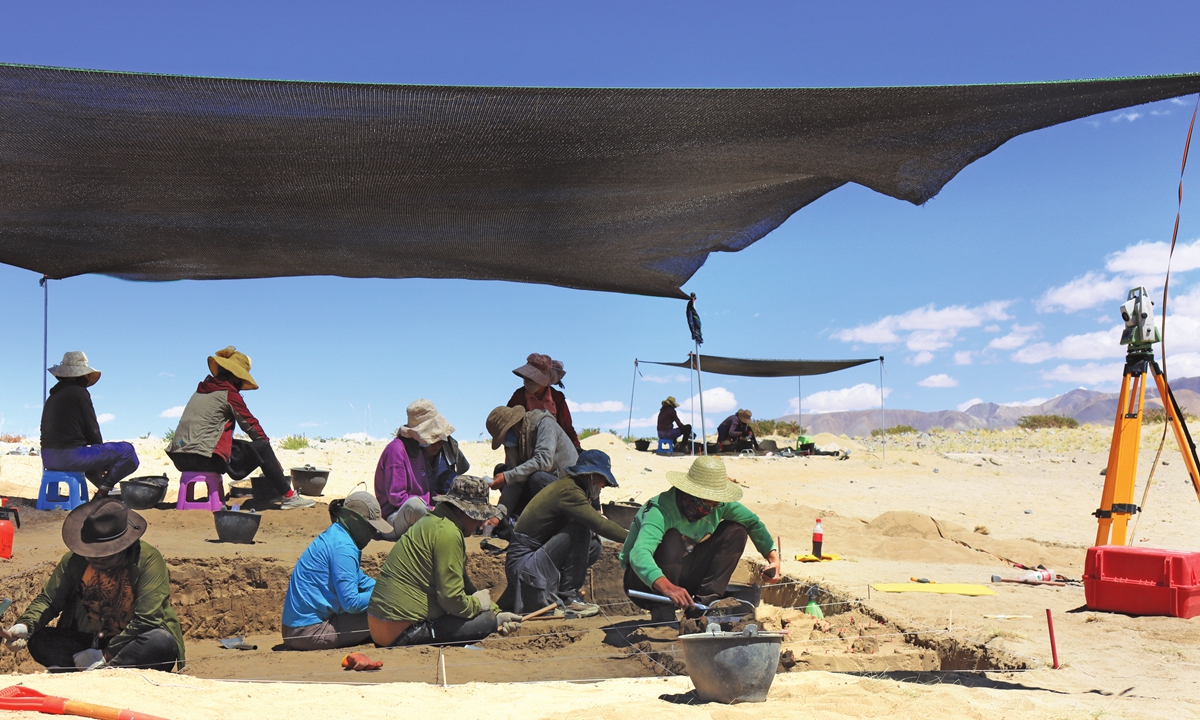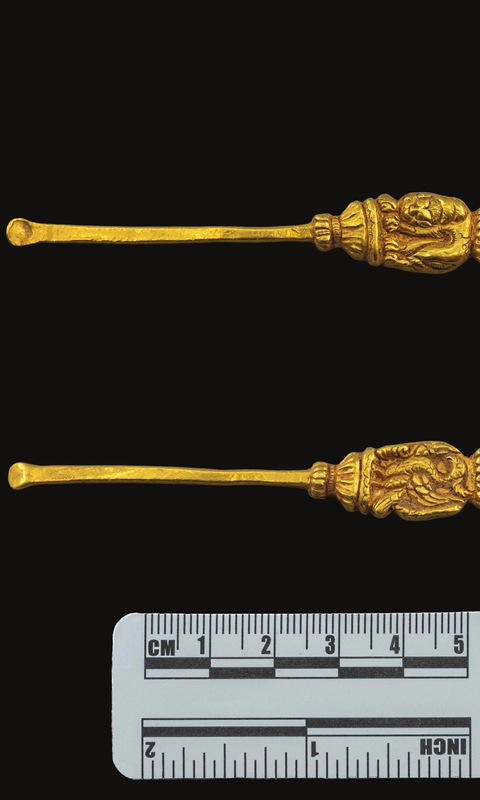Four significant archaeological sites reveal the history of Xizang
Cultural connection

Archaeologists work at the Qiere Site in Southwest China's Xizang Autonomous Region.Photo: Courtesy of the National Cultural Heritage Administration
Thousands of years ago, Princess Wencheng from the Tang Dynasty (618-907), a powerful Central Plains dynasty, married King Songtsen Gampo of the Tubo Kingdom (633-842) on the Qinghai-Xizang Plateau at the behest of Emperor Xuanzong of Tang Dynasty, contributing to the harmonious relationship and flourishing cultural exchanges between the Central Plains and the plateau.
Actually, the cultural communication between the two regions can be traced back to the Paleolithic period, according to research by Chinese paleontologists and archaeologists in recent years.
On Thursday, China's National Cultural Heritage Administration (NCHA) joined with related institutions in Southwest China's Xizang Autonomous Region, to release the latest research results on the four most representative archaeological sites of importance to the history of Xizang and its people.
More than 500 relics, mainly made of stone and earth such as fire ponds and ash pits, have been unearthed at the first site, the Qiere Site in Xizang's Gar county. The excavated relics and the various stone tools are estimated to date back to the Paleolithic and Neolithic periods.

Two gold earpicks unearthed from the Damxung Cemetery in Xizang Photo: Courtesy of the National Cultural Heritage Administration
The site has provided valuable materials for research into the origin and migration routes of ancient people and fills in the gap concerning the prehistoric culture on the plateau 8,000 to 10,000 years ago, according to experts at the conference.
"The Paleolithic stone tool production techniques and main tool shapes in the Qinghai-Xizang Plateau have a close connection with the Paleolithic tradition of ancient northern China," Huo Wei, a professor in archaeology at the College of History and Culture in Sichuan University, told the Global Times.
The Mabucuo Site in Kangmar county is a prehistoric settlement site dating back to about 4,000 years ago. Archaeological evidence of human activity such as fire pits, tombs and relics including pottery and ivory products have been found there.
The discoveries have led many experts to coin the term "Mabucuo Culture" as the site seems to have been the home to a unique lakeside fishing and hunting culture not previously seen on the plateau. Evidence that ancient people in the region made full use of lake resources points to greater economic diversity at the time and offers more clues to help construct the social history of Xizang.
The Gebusailu Site in Zanda county was home to a relatively independent culture during the transition stage from the end of the Neolithic Age to the early Metal Age in Xizang. Cemeteries from an early phase of the site are mainly stone-made tombs that date from 3,600 to 3,000 years ago and reflect the economic characteristics of animal husbandry and hunting. Interestingly, the tombs are very similar to tombs from the same period in Northwest China's Xinjiang Uygur Autonomous Region.
Cemeteries from the second phase are mainly cave tombs from 2,700 to 2,100 years ago.
The bronze wares unearthed from the early stage cemeteries show characteristics of Western metallurgical techniques and can be seen as imported products. The relics show that ancient people in Xizang had broad cultural communication with other regions.
The Damxung Cemetery in Damxung county dates to the 7th to 9th centuries during the period of the Tubo Kingdom. Archaeologists have discovered 52 earthen tombs, including stone chamber tombs and earthen pit tombs at the site.
Unearthed black and white stone Go pieces, lacquer ware fragments, textiles and many other gold and silver relics show a close cultural connection between Xizang and the Central Plains and are important evidence of the exchanges and integration among various ethnic groups.
According to NCHA, the four archaeological sites further reveal the complex process of prehistoric cultural development on the Qinghai-Xizang Plateau, and demonstrate the history of ethnic exchanges and integration in Xizang.
"This work report shows that the history and culture of Xizang is not independent, but was formed from diverse regions and rich cultural backgrounds," said Song Xinchao, deputy head of NCHA.

